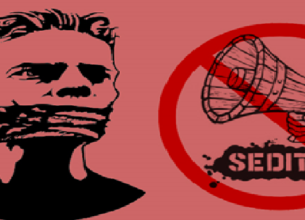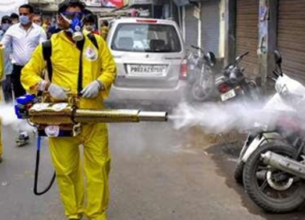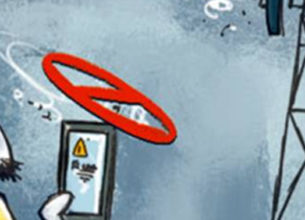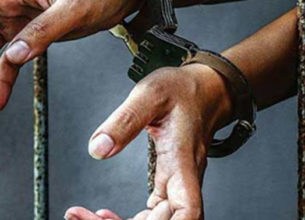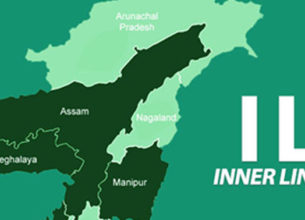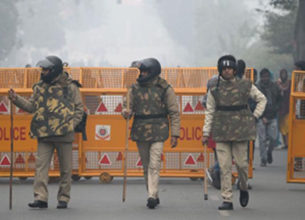SECTION 144 OF CRIMINAL PROCEDURE CODE
21, Dec 2019

Prelims level : Governance - Policies
Mains level : GS-III Security Challenges and their Management.
Context:
- In the backdrop of invocation of section 144 of Criminal Procedure Code (CrPC)in many parts of the country amid protest, this article highlights that this provision of criminal law is a legacy of British which we continue to practice even in modern times.
Who is Empowered?
- District Magistrate, a Sub-divisional Magistrate or any other Executive Magistrate can invoke section 144 of CrPC in an area in urgent cases of nuisance of apprehended danger or if they believe immediate prevention or speedy remedy is desirable to control the situation.
What can the Magistrate Do?
- Section 144 of CrPC gives power to a District Magistrate, a sub- divisional Magistrate or any other Executive Magistrate on behalf of the State Government to issue an order to an individual or the general public in a particular place or area to “abstain from a certain act” or “to take certain order with respect to certain property in his possession or under his management”.
- As per the Section, the order can be passed only “if such Magistrate considers”, that the direction is likely to prevent
- a. Obstruction, Annoyance or Injury to any person lawfully employed
- b.Danger to Human Life, Health or safety
- c.Disturbance of the Public Tranquility, or a riot or Affray
- This order can be passed against a particular individual or general public. The order can be passed even ex-parte.
- In emergency cases, the magistrate can pass these orders without prior notice to the individual against whom the order is directed.
Can they Prevent Assembly of People?
- It is generally believed that assembly of three or more people is prohibited under Section 144. However, it can be used to restrict even a single individual. Such an order is passed when the magistrate considers that it is likely to prevent, or tends to prevent, obstruction, annoyance or injury to any person lawfully employed, or danger to human life, health or safety, or a disturbance of the public tranquillity, or a riot, of an affray.
What is the Maximum Tenure of Section 144?
- However, no order passed under Section 144 can remain in force for more than two months from the date of the order, unless the state government considers it necessary. Even then, the total period cannot extend to more than six months.
Rescinding of section 144:
- As per Cr.PC, an aggrieved person may challenge the order of magistrate to invoke section 144. So under section 144, Any Magistrate may, either on his own motion or on the application of any person aggrieved, rescind or alter any order made under this section, by himself or any Magistrate subordinate to him.
- While taking such application of rescinding section 144, the magistrate concerned shall provide the applicant an opportunity to appear before him either in person or by pleader for showing cause against the order.
Criticism on invoking section 144 by the Government:
- Section 144 ends up conferring almost unbridled powers upon executive officers to commit any kind of atrocities on people detained. It also takes away people’s fundamental right under Article 19 of expression and protest against government actions and policies.
- The only check placed upon the officer before passing any order under Section 144 is whether or not it satisfied his conscience, which is often eroded by political demands by the ruling government.
- The immediate remedy against such an order is a revision application to the magistrate himself.
- An aggrieved individual can also approach the High Court by filing a writ petition if his fundamental rights are at stake. However, fears exist that before the High Court intervenes, the rights could already have been infringed.
- Imposition of Section 144 to an entire state, as in UP, has also drawn criticism since the security situation differs from area to area.
Impact on Fundamental Rights:
- The orders under this provision will lead to the infringement of fundamental rights to freedom of speech and expression, assembly and movement guaranteed under Articles 19(1)(a),(b) and (c) of the Constitution. Hence, the orders under Section 144 have to meet the test of “reasonable restrictions” as per Article 19.
“Test of Proportionality”:
1. Modern Dental College case (2016):
- To ascertain whether a restriction on liberties guaranteed under Article 19 is reasonable or not, the Supreme Court has developed the “test of proportionality”.
- In the Constitution Bench decision in Modern Dental College case (2016), the Supreme Court held that a law imposing restrictions will be treated as proportional if :
- a.It is meant to achieve a proper purpose, and
- b.If the measures taken to achieve such a purpose are rationally connected to the purpose, and
- c.If such measures are Necessary.
2.Also in the Puttaswamy case (2017),the SC laid down a four-fold test to determine proportionality:
- a.A measure restricting a right must have a legitimate goal (legitimate goal stage).
- b.It must be a suitable means of furthering this goal (suitability or rationale connection stage).
- c.There must not be any less restrictive but equally effective alternative (necessity stage).
- d. The measure must not have a disproportionate impact on the right holder (balancing stage).
- So, the legality of the orders passed under Section 144 CrPC will be tested on the basis of these principles of ‘reasonableness’ and ‘proportionality’.
Rulings of Judiciary favouring Section 144:
1. Babulal Parate vs State of Maharashtra (1961):
- A five-judge Bench of the Supreme Court refused to strike down the law, saying it is “not correct to say that the remedy of a person aggrieved by an order under the section was illusory”.
2.Ram Manohar Lohiya case (1967):
- It was challenged again by Dr Ram Manohar Lohiya in 1967 and was once again rejected, with the court saying “no democracy can exist if ‘public order’ is freely allowed to be disturbed by a section of the citizens”.
3.Madhu Limaye vs Sub-Divisional Magistrate (1970):
- In another challenge in 1970 Madhu Limaye vs Sub-Divisional Magistrate, a seven-judge Bench said the power of a magistrate under Section 144 “is not an ordinary power flowing from administration but a power used in a judicial manner and which can stand further judicial scrutiny”.
- The court, however, upheld the constitutionality of the law.
It ruled that the restrictions imposed through Section 144 cannot be held to be violative of the right to freedom of speech and expression, which is a fundamental right because it falls under the “reasonable restrictions” under Article 19(2) of the Constitution.
The fact that the “law may be abused” is no reason to strike it down, the court said.
Mere likelihood of danger not a ground to invoke Sec.144:
- As held by the Supreme Court, mere apprehension of danger is not a sufficient ground to curb citizens’ rights by invoking Section 144 CrPC.
- There should be ‘genuine’ apprehension of ‘imminent’ danger and not mere ‘likelihood’ or ‘tendency’.
- In Babulal Parate v State of Maharashtra (1961) case, the SC held that the power can be used even in anticipation of danger. But it should be based on sufficient materials which show that immediate prevention of certain acts is necessary to preserve public safety.
- “The test laid down in the Section is not mere `likelihood’ or `tendency’. The section says that the magistrate must be satisfied that immediate prevention of particular acts is necessary to counteract danger to public safety etc. The power conferred by the section is exercisable not only where present danger exists but is exercisable also when there is an apprehension of danger”.



